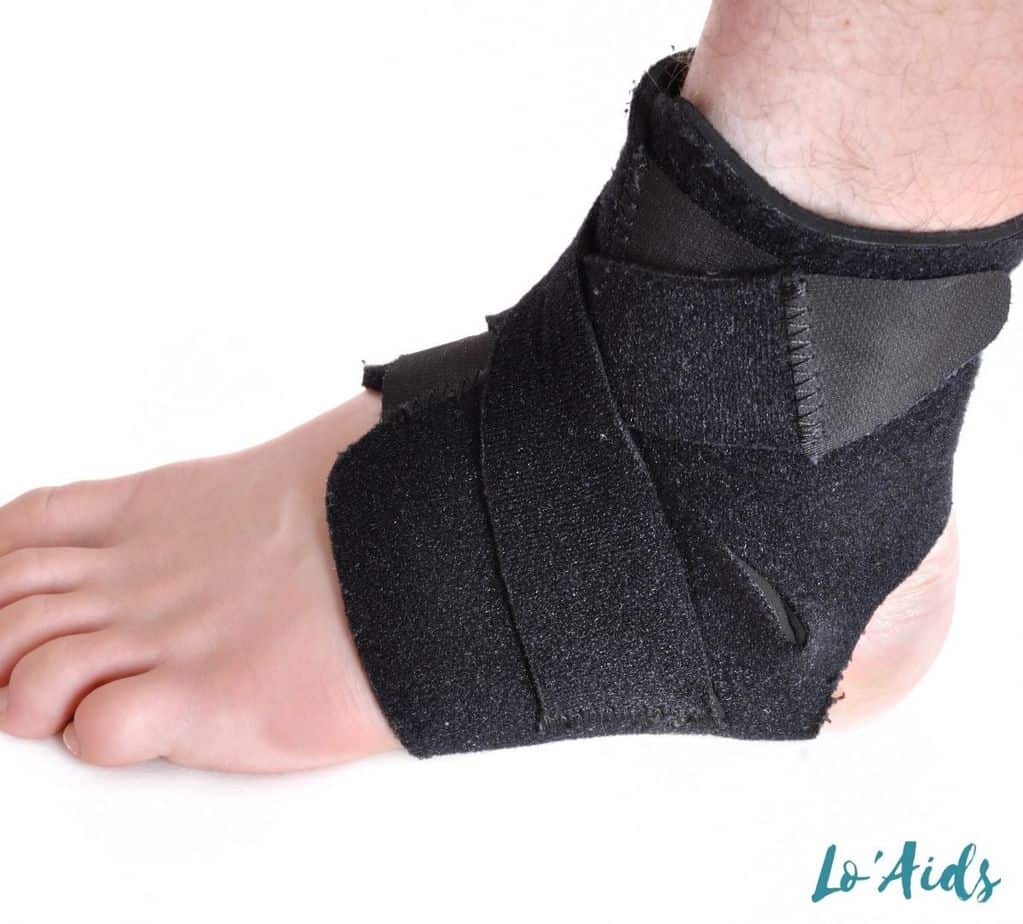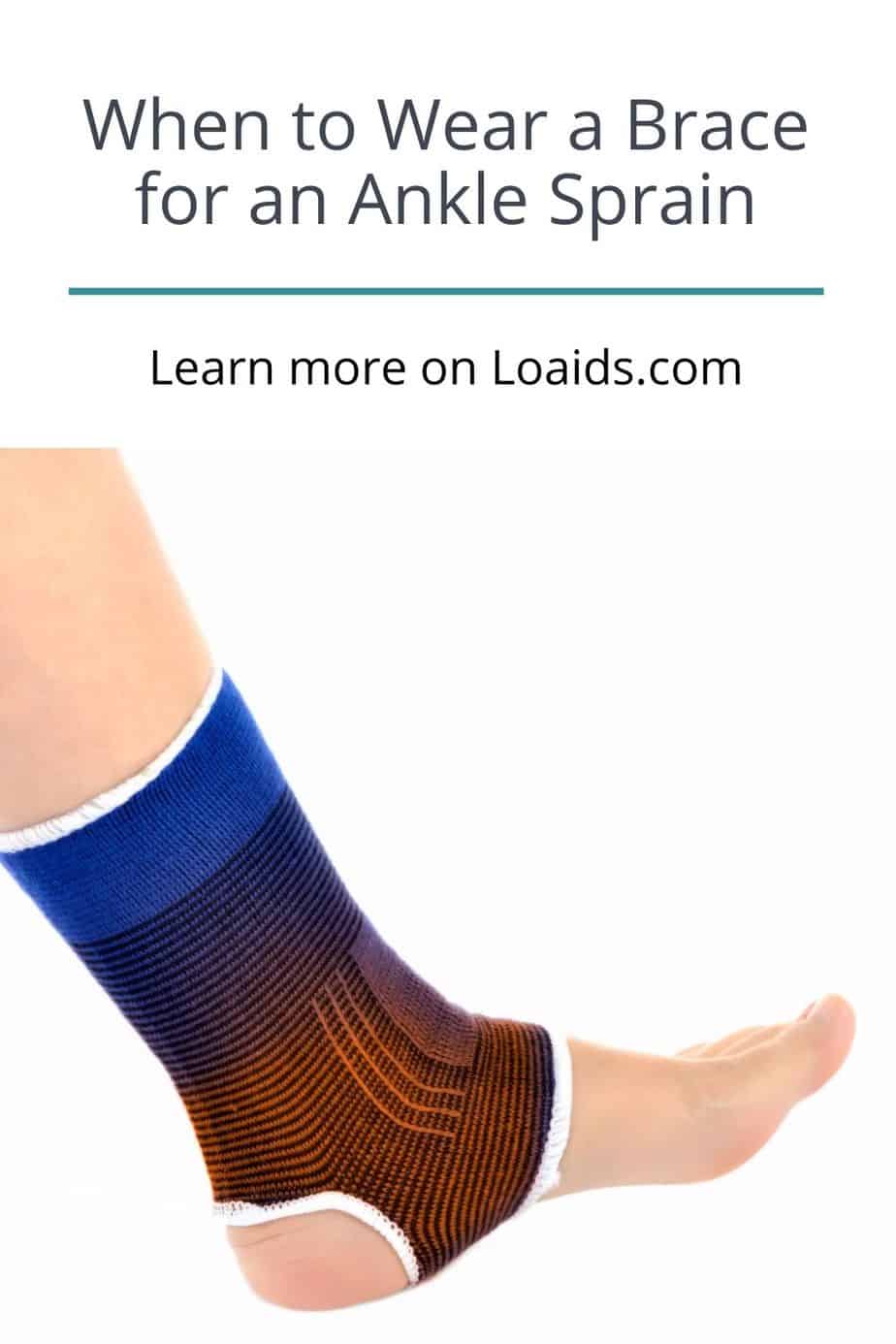Wondering when to wear a brace for an ankle sprain?
These common injuries are a pain (literally and figuratively), but they’re fairly easily treated.
Most doctors or physical therapists can provide you with a list of ankle exercises, but depending on the complexity of your sprain, you may need additional support during and even after rehabilitation.
Let’s talk about exactly what you can expect when your doctor recommends a brace, including when and how long you’ll have to keep it on.
Check: The Best Ankle Support for Swelling
Table of Contents
When to Wear a Brace for an Ankle Sprain
First things first: this is not medical advice. Every single sprain is different. While I’m sharing info about typical brace usage, if your doctor recommends something different, please follow that advice.
In general, it is probably a good idea to wear some brace on the injured ankle when getting back to activities.
These synthetic and elastic or stronger/thicker materials of ankle braces mainly enhance stability to joints.
But braces always depend on the severity of the injured ankle to give you insights.
Here are the types of ankle sprains that you might require an ankle brace, along with roughly how long they take to heal.

- A first-degree ankle sprain is a mild sprain or tear of the ligament that causes mild swelling and pain and tends to heal quickly.
First-degree sprains usually take three weeks to heal. But some people can recover in a shorter time, while others need 4 to 5 weeks.
- A second-degree ankle sprain is slightly more severe, usually involving 50% of ligaments torn, and there will be more swelling, pain, and mobility problems.
When you are diagnosed with a second-degree sprain, you can expect to recover more than 4-6 weeks.
- A third-degree ankle sprain is a complete tear that will take longer to heal. This sprain requires some patience, as recovery can take 3 to 6 months.
Get all the information you need on using crutches for a sprained ankle in our comprehensive article ‘Crutches for Sprained Ankle‘!
Here are more facts to give you a clear picture of when to wear an ankle brace.
- When the ankle still hurts or does not fully function after treatment, it is because your ankle does not have enough time to heal correctly, so you may consider wearing an ankle brace.
- Wear the brace to relieve pain by reducing the amount of stress on the injured structure. It can also provide stability in both rehabilitation and return to sports/work.
- A brace can cause healing at a faster rate because it limits the movement available to the joint.
- Braces may be used if you have an old injury that never healed properly because, most likely, you used home remedy and expect the sprain to heal on its own.
- Since ankle braces provide structural stability, wearing one can prevent future sprains.
READ MORE: Best Ankle Braces to Prevent Rolling
When NOT to Wear an Ankle Brace
There is no question that a brace can help the ankle in many ways, but remember that wearing one is not a cure or a 100% prevention of ankle sprain.
This is why it is not necessary to wear braces all the time.

- They cannot replace muscle strength or synergy, nor can they replace the stability provided by our joint anatomy.
- Wearing a Brace for too long makes us feel dependent on the synthetic structural support it provides.
- Braces cannot replace a rehabilitation plan prepared by your physical therapist or exercise physiologist.
- In some cases, wearing a brace for a long time can cause muscle atrophy, loss of proprioception, and incorrect activation patterns of muscles before and after exercise.
- By wearing a brace and reducing the load on the injured part of the body, you can increase the burden on other parts of the body.
- For some that may affect their work (like models or actresses), it is aesthetically unattractive.
Also Read: Best Ankle Support For Weak Ankles
What’s the Best Way to Prevent an Ankle Sprain?
Preventing sprains from happening in the first place or avoid recurrent ankle sprain is ideal, especially if you are an athlete or physically active.
Just like they always say, prevention is better than cure.

So here are advisable steps you can take to avoid ankle sprain:
- Light stretch or better, jog slowly for 2-3 minutes to warm up muscles before any activity.
- Condition your muscles for the event is highly recommended of most athletic trainers warming up for several weeks to build muscle strength and mobility.
- Use shoes specific to the type of event or activity you will be doing.
- Avoid running or walking on uneven surfaces, or try to choose a good surface if possible.
- Be careful going down a slope too quickly; this can often lead to more injuries than running uphill!
- If you experience pain in your feet and ankles while playing sports or any physical activity, stop the activity or rest until the pain subsides.
Check out this video for some tips when sleeping with an ankle brace:
FAQs
Is it OK to wear an ankle brace all day?
Suppose you are using your ankle brace as a rehabilitative or treatment device. In that case, you should wear your brace while performing any daily activities to provide more stability and prevent re-injury.
Can you wear an ankle brace for too long?
Overuse of an ankle brace can be harmful to you because it can affect your ankle strength and balance. If the ankle doesn’t have to do the work for balance and support, then it gets weaker, increasing the risk of injury.
How long should you immobilize a sprained ankle?
The initial treatment for all grade II and grade III ankle sprains now requires strict fixation for 7 to 10 days before immobilizing the ankle with a bandage or ankle brace, and resting the foot will then be enough.
Should I wrap a sprained ankle at night?
Wrap it tightly, but not too tightly, so as not to cause numbness or tingling. Take it off or significantly loosen it at night when you go to bed. In addition, elevating the ankle above the level of the heart can help reduce swelling and pain.
Conclusion
The bottom line is the amount of time and the treatment plan it takes for an ankle sprain to heal always depends on the severity of the injury.
Deciding on wearing braces or not should be based on a proper diagnosis from a medical practitioner.
So to ensure that your injury, ache, or pain is managed in the best way possible, it is advised to work with your physician and a skilled physical therapist on the initial treatment and the long-term rehab to ensure that you are moving in the right direction.
References
- ACE Physical Therapy and Sports Medicine Institute. 2018. “ACE Physical Therapy and Sports Medicine Institute.” ACE Physical Therapy and Sports Medicine Institute. February 2, 2018. https://ace-pt.org/should-i-wear-ankle-braces/.
- Geraets, Anna. 2016. “To Brace or Not to Brace – Pros and Cons of Bracing – Peak Physio.” Peak-Physio.com.au. September 3, 2016. https://www.peak-physio.com.au/brace-not-brace-pros-cons-bracing/.
- Holland, Kimberly. 2016. “Is It a Sprain or a Strain? Tips for Identification.” Healthline. Healthline Media. December 5, 2016. https://www.healthline.com/health/sprain-vs-strain#treatment.

When to wear a brace for ankle an ankle sprain? Let us know your thoughts on the comment section below!





